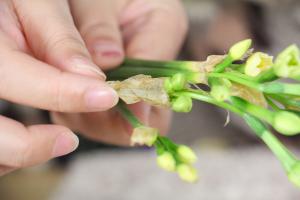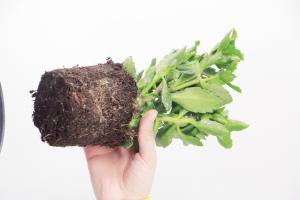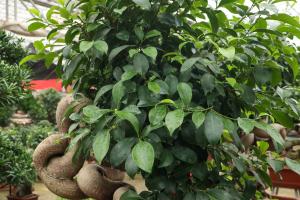What Diseases Most Commonly Affect Bonnie Plant Tomatoes
Tomatoes are a popular and easy-to-grow plant for home gardeners. However, they are susceptible to various diseases that can affect their growth and yield. If you're growing Bonnie Plant tomatoes, it's important to be aware of the diseases that might impact your plant's health. In this article, we'll take a look at some common tomato diseases and how to prevent them.
Early Blight
Early blight is a fungal disease that affects the leaves and stems of tomato plants. The disease is characterized by dark, concentric rings on the leaves, which eventually turn yellow and fall off. Early blight is caused by a fungus called Alternaria solani, which overwinters in infected plant debris.
To prevent early blight, it's important to practice good sanitation in your garden. Remove any infected plant debris from the area and avoid overhead watering, as this can spread the fungus. Fungicides may also be effective in controlling the disease.
Verticillium Wilt
Verticillium wilt is a soil-borne fungal disease that affects the roots of tomato plants. The fungus invades the plant's vascular system, causing the leaves to wilt and turn yellow. The disease often occurs during periods of hot, dry weather and can easily spread to other plants in the area.
To prevent verticillium wilt, it's important to practice crop rotation. Avoid planting tomatoes in the same area for at least three years, as the fungus can survive in the soil for long periods of time. Good drainage and proper irrigation can also help prevent the disease.
Fusarium Wilt
Fusarium wilt is another soil-borne fungal disease that affects tomato plants. The fungus invades the plant's vascular system, causing the leaves to wilt and turn yellow. Unlike verticillium wilt, which occurs during hot weather, Fusarium wilt can occur in both warm and cool temperatures.
To prevent Fusarium wilt, it's important to practice good sanitation in your garden. Remove any infected plant debris from the area and avoid planting tomatoes in the same area for at least three years. Good soil drainage and proper irrigation can also help prevent the disease.
Blossom End Rot
Blossom end rot is a physiological disorder that affects the fruit of tomato plants. The condition is characterized by a brown, leathery spot on the bottom of the fruit. Blossom end rot is caused by a calcium deficiency in the plant, which is often due to inconsistent watering.
To prevent blossom end rot, it's important to maintain consistent soil moisture levels. Avoid overwatering or underwatering your tomato plants and make sure to mulch around the base of the plants to help retain moisture.
Conclusion
By being aware of the diseases that commonly affect Bonnie Plant tomatoes, you can take steps to prevent them and ensure a healthy harvest. Practice good sanitation, crop rotation, and proper irrigation to keep your tomato plants healthy and disease-free.

 how many times do yo...
how many times do yo... how many planted tre...
how many planted tre... how many pine trees ...
how many pine trees ... how many pecan trees...
how many pecan trees... how many plants comp...
how many plants comp... how many plants can ...
how many plants can ... how many plants and ...
how many plants and ... how many pepper plan...
how many pepper plan...

































